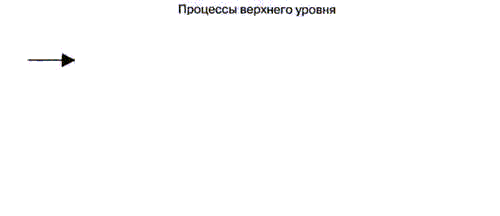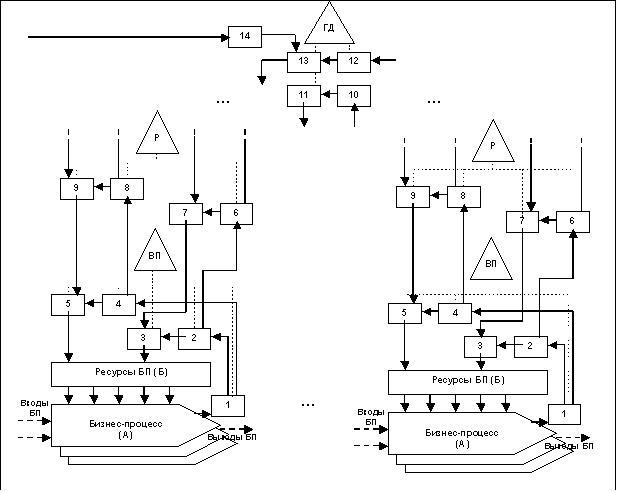Summary of research and development
Purpose of work
The work purpose is a substantiation of rationality of application of the process approach to management of organization, efficient control business by processes and their optimization for the purpose of minimization of human, material and financial expenses in the course of work of the enterprise, increase of production competitiveness, increase of firm potential.
In the conditions of insufficient competitiveness of the enterprises of Ukraine in the world market application of the process approach in management of the organization, it is an actual and perspective direction of an exit from a current situation.
For ten years of existence of chair "Quality management" this theme was studied only by two masters – Polozhaj N.V. in her work «Use of the process approach in activity of the enterprises» and Jurchak E.A. in her work «Application of the process approach in manufacture activity». The given theme has not settled the potential and is not investigated enough, therefore I see its further studying expedient.
Introduction
Perfection of activity of the enterprise can be carried out at the expense of application of the process approach to its management that allows:
To make the list of the basic business processes and on the basis of received results to draw conclusions about rationality of using the resources, number and personnel loading etc;
To define processes lacking and duplicated business and to introduce corresponding corrective amendments;
To define the list of functions of everyone to enterprise divisions;
To establish interrelations of divisions and functions carried out in them.
As any organization represents difficult system of interactions and the description of one of activity segments cannot eliminate system problems in management of all organization, it is necessary to describe all basic business processes.
System of terms of the process approach
In the basis of the concept of the process approach to management are put:
- Principles of construction of systems of the quality management, MS ИСО of a series of 9000 versions 2000 offered in standards;
- Cycle P-D-C-A (Plan-Do-Check-Action) which is often named a cycle of Deminga [1];
- Principles of construction BSC (Balance ScoreCard), developed by Norton and Kaplan [2];
- Principles of management of projects, as any changes in the organizations including introduction of the process approach, are carried out as the project;
- The best world experience in the area of construction of systems of management and improvement of activity of the organizations.
At the heart of the process approach to management of the organization there is an allocation in the organizations of business processes and management of these business processes.
Main principles of management do not depend on a type, a profile and a company sphere of the activity, therefore further the term will be applied to a company designation "organization".
The main objects in any control system are «Object of management» – that is being operated, and «the Subject of management» – the one who operates. Accordingly, for system of process management these objects are defined by terms "Process" and «the Owner of process».
Process is a steady, purposeful set of the interconnected kinds of activity which on a certain technology will transform inputs to the exits which are of value for the consumer (fig. 1).

Figure 1 Conceptual scheme of management of process
The given definition is based on definition of the standard of MS ИСО 9000:2000 [3].
Three basic groups of processes are allocated:
Through (interfunctional) processes;
Processes (intrafunctional) and subprocesses of divisions;
Operations (function) of the lowermost level of decomposition of activity of the organization.
The term "subprocess" is used when it is required to consider process in more details, as set of subprocesses making it (fig. 2).

Figure 2 Decomposition of process on subprocesses
(The size of animation: 68Kb, 500x216, Quantity of repetitions: 5, Quantity of shots: 9. For repeated display of animation update page).
For management of process it is necessary to appoint the official responsible for performance of process and its result. To make it possible for the official to operate the process, the resources necessary for carrying out of process should be allocated in its order, the rights and powers are delegated.
The owner of the process is an official or the joint controls having at the order resources, necessary for process performance, and bearing responsibility for result of process.
Business process input is a product which during process performance will be transformed to an exit.
Exit (product) is a material or information object or the service, growing out of performance of process and consumed external in relation to process by clients.
Business process resource is the material or information object constantly used for performance of process, but not being a process input.
Despite variety of approaches, it is necessary to allocate one understanding of the process approach based on complex, system consideration of activity of the organization as set of processes, system engineering of management by processes with use of principles ISO of a series 9000:2000 as the optimal.
Base technique of management of process
The process presented in figure 1, has inputs and exits. For process performance resources (the personnel, the equipment, an infrastructure, environment and so forth) are used. Management of process is carried out by the owner of process. All resources necessary for performance of process, are at its disposal. To conduct management of process, the owner of process should receive the information on a course of process and the information from the consumer (client) of process. To a higher management the regular reporting about a process course should arrive.
In figure 3 the scheme of a control system of the enterprise, constructed on the basis of a considered technique of management is presented by processes.

Figure 3 Scheme of a control system of the enterprise, based on the process approach to management.
In figure 3 following symbols are used:
ГД – the General director of the enterprise;
Р – the head, assistant of General director;
ВП – the owner of process;
A – means of performance of business process;
Б – means of control facilities process resources;
1 – means of reception of the operative administrative information on a process course;
2 – means of the analysis of the operative information on process by the owner of process;
3 – means of working out of operative administrative decisions the owner of process;
4 – means of the monthly (quarterly) analysis of process by the owner of process;
5 – means of working out of actions for improvement of process by the owner of process;
6 – means of the analysis of the operative information on deviations during process by the head;
7 – means of working out of operative administrative decisions the head;
8 – means of the monthly (quarterly) analysis of process by the head;
9 – means of working out of actions for improvement of process by the head;
10 – means of the analysis of the operative information on deviations during processes by the General director;
11 – means of working out of operative administrative decisions the General director;
12 – means of the analysis of the information on performance of business processes of the enterprise by the General director;
13 – means of working out of actions for improvement of business processes and their reduction in conformity to enterprise strategic targets;
14 – means of the analysis of an environment.
The conclusion
As profit maximization is the purpose of any enterprise activity, there is a necessity of search of ways of achievement of an object in view. Optimization of work of the organization for the purpose of reduction of costs is one of such ways. Optimum application of the system approach which allows for this purpose is:
All activity of the enterprise to consider as a network of processes, thus a technique of management of process will correspond to requirements of standard ISO of a series 9001:2000;
To Allocate the owner of process with all resources necessary for maintenance of productivity and efficiency of process, and to occupy to it accurate position in organizational structure of the enterprise;
100 % to define and regulate interactions between structural divisions within the limits of a network of processes;
Completely to document activity. The documentation on 90 … 100 % corresponds to real activity and can be almost used;
Not to change organizational structure of the enterprise at complex introduction before occurrence of the objective data necessary for a substantiation of changes;
To Appoint heads of divisions owners of processes;
To Provide a quality management of processes;
To Spend certification on ISO 9001:2000.
Sources
- Репин В.В., Елиферов В.Г. «Основы формирования сети процессов в организации. И снова о процессах», выпуск № 18 из серии «Все о качестве. Отечественные разработки», 2002г.
- Репин В.В., Маклаков С.В. «ARIS Toolset/BPWin: выбор за аналитиком». Журнал «Компьютер пресс», № 1, январь 2002г.
- ISO 9000:2000 Системы менеджмента качества – Основные положения и словарь.
- ISO 9001:2000 Системы менеджмента качества – Требования.
- Практическое руководство по реинжинирингу бизнес-процессов. М. Робсон, Ф. Уллах. «Аудит», Москва, 1997г.
- Елиферов В.Г. Процессный подход к управлению организацией [Электронный ресурс] - http://www.management.com.ua/cm/cm021.html
- Процессный подход. Основы и методика реализации. А.Д. Шадрин. Все о качестве. Отечественные разработки. Выпуск 16-17, Москва, 2002г.
- Материалы семинара Тито Конти «TQM – процессный подход – новый взгляд», Москва, 17-18 октября 2002г.
- Волчков С.А., Балахонова И.В. Использование современных стандартов управления предприятием (MRPII, ERP, CSRP, ISO 9000) для непрерывного улучшения бизнес-процессов (BPI) // Организатор производства. – 2001г.
- Репин В.В. Отрывок из Главы 1 книги В.В. Репина «Бизнес-процессы компании. Построение, анализ, регламентация» Отрывок из Главы 1 книги В.В. Репина «Бизнес-процессы компании. Построение, анализ, регламентация». [Электронный ресурс] - http://deming.com.ua/index.php?id=46
- Положай Н.В. «Использование процессного подхода в деятельности предприятий» [Электронный ресурс] / Портал магистров ДонНТУ, - http://masters.donntu.ru/2005/mech/polojay/diss/index.htm
- Лекция 1. Процессный подход к управлению компанией [Электронный ресурс] - http://3dvok.com/ru/lecture1
- Юрчак Е.А. Применение процессного подхода в деятельности производства [Электронный ресурс] / Портал магистров ДонНТУ, - http://masters.donntu.ru/2007/mech/urchak/diss/index.htm
|
up || DonNTU >
Master's portal of DonNTU ||
About author || up
| |






